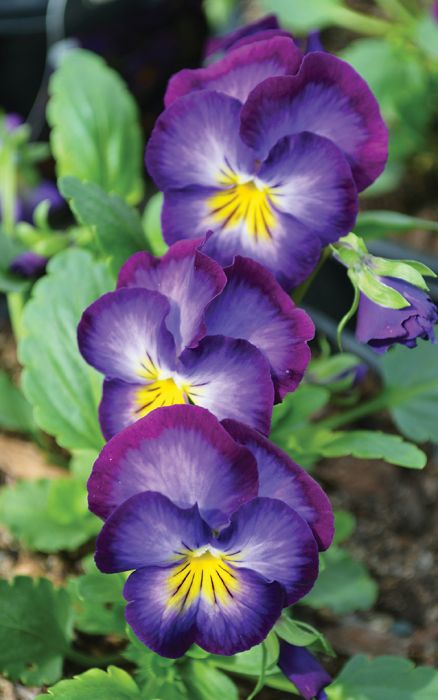Viola, Sweet Violet 'Halo Violet'


Out of stock
Sold out for the season- Sun Preference
- Full-Sun, Part-Sun
- Bloom or Harvest Time
- May, June
Description
This variety produces spectacular blooms that are white with wide violet margins and yellow eyes; flowers early and persistantly all season, even in low light; well branched and free flowing habit
Minnesota's Largest Selection of Perennials
Discover an unparalleled selection of perennials at Gertens! With the largest variety in Minnesota, we offer endless options of colorful perennials, natives, and pollinator plants to beautify your garden year after year. From vibrant flowers to lush foliage, our perennials are perfect for adding beauty and charm to your outdoor space. Visit Gertens today and see why we're known as Minnesota's Destination Garden Center!
Details
Height: 8 inches
Spacing: 8 inches
Sunlight: ![]()
![]()
Hardiness Zone: 4a
Other Names: Winter Pansy, Pansy
Group/Class: Halo Series
Description:
This variety produces spectacular blooms that are white with wide violet margins and yellow eyes; flowers early and persistantly all season, even in low light; well branched and free flowing habit
Ornamental Features
Halo Violet Violet has masses of beautiful violet flowers with white overtones and yellow eyes at the ends of the stems from early spring to late fall, which are most effective when planted in groupings. Its crinkled round leaves remain green in color throughout the season. The fruit is not ornamentally significant.
Landscape Attributes
Halo Violet Violet is an herbaceous perennial with a mounded form. Its relatively fine texture sets it apart from other garden plants with less refined foliage.
This plant will require occasional maintenance and upkeep, and should only be pruned after flowering to avoid removing any of the current season's flowers. Deer don't particularly care for this plant and will usually leave it alone in favor of tastier treats. Gardeners should be aware of the following characteristic(s) that may warrant special consideration;
- Self-Seeding
Halo Violet Violet is recommended for the following landscape applications;
- Mass Planting
- Border Edging
- General Garden Use
- Container Planting
Planting & Growing
Halo Violet Violet will grow to be about 8 inches tall at maturity, with a spread of 12 inches. When grown in masses or used as a bedding plant, individual plants should be spaced approximately 8 inches apart. It grows at a fast rate, and tends to be biennial, meaning that it puts on vegetative growth the first year, flowers the second, and then dies. However, this species tends to self-seed and will thereby endure for years in the garden if allowed.
This plant does best in full sun to partial shade. It prefers to grow in average to moist conditions, and shouldn't be allowed to dry out. It is not particular as to soil type or pH. It is highly tolerant of urban pollution and will even thrive in inner city environments. Consider covering it with a thick layer of mulch in winter to protect it in exposed locations or colder microclimates. This is a selected variety of a species not originally from North America.
Halo Violet Violet is a fine choice for the garden, but it is also a good selection for planting in outdoor pots and containers. It is often used as a 'filler' in the 'spiller-thriller-filler' container combination, providing a mass of flowers against which the thriller plants stand out. Note that when growing plants in outdoor containers and baskets, they may require more frequent waterings than they would in the yard or garden. Be aware that in our climate, most plants cannot be expected to survive the winter if left in containers outdoors, and this plant is no exception. Contact our experts for more information on how to protect it over the winter months.
More Information
| Bloom or Harvest Time | May, June |
|---|---|
| Sun Preference | Full-Sun, Part-Sun |
| USDA Hardiness Zone | 4, 5, 6, 7, 8, 9 |
| Common Family Name | Sweet Violet |
| Mature Spread (Range) | Under 12" |
| Mature Height (Range) | 7-12" |


